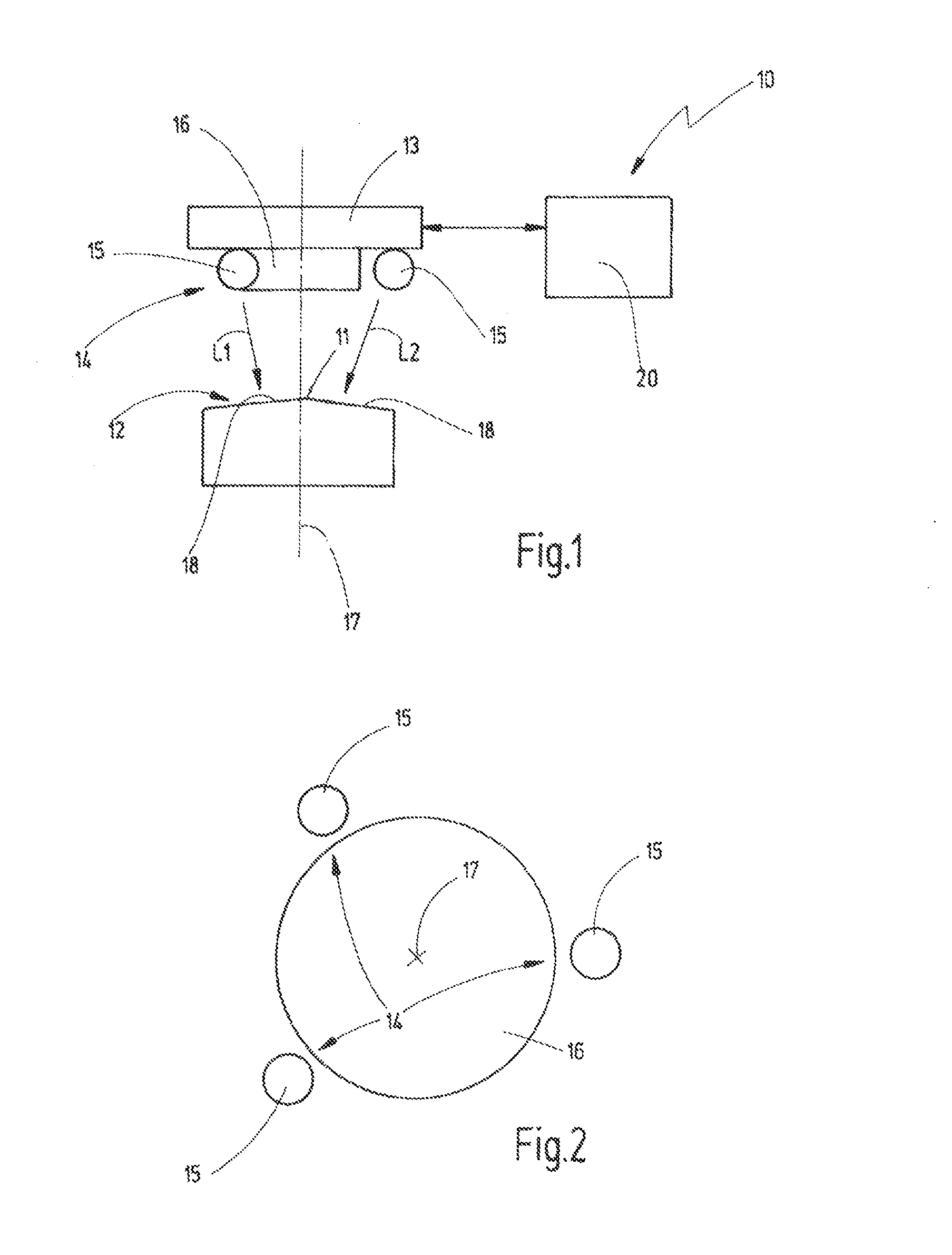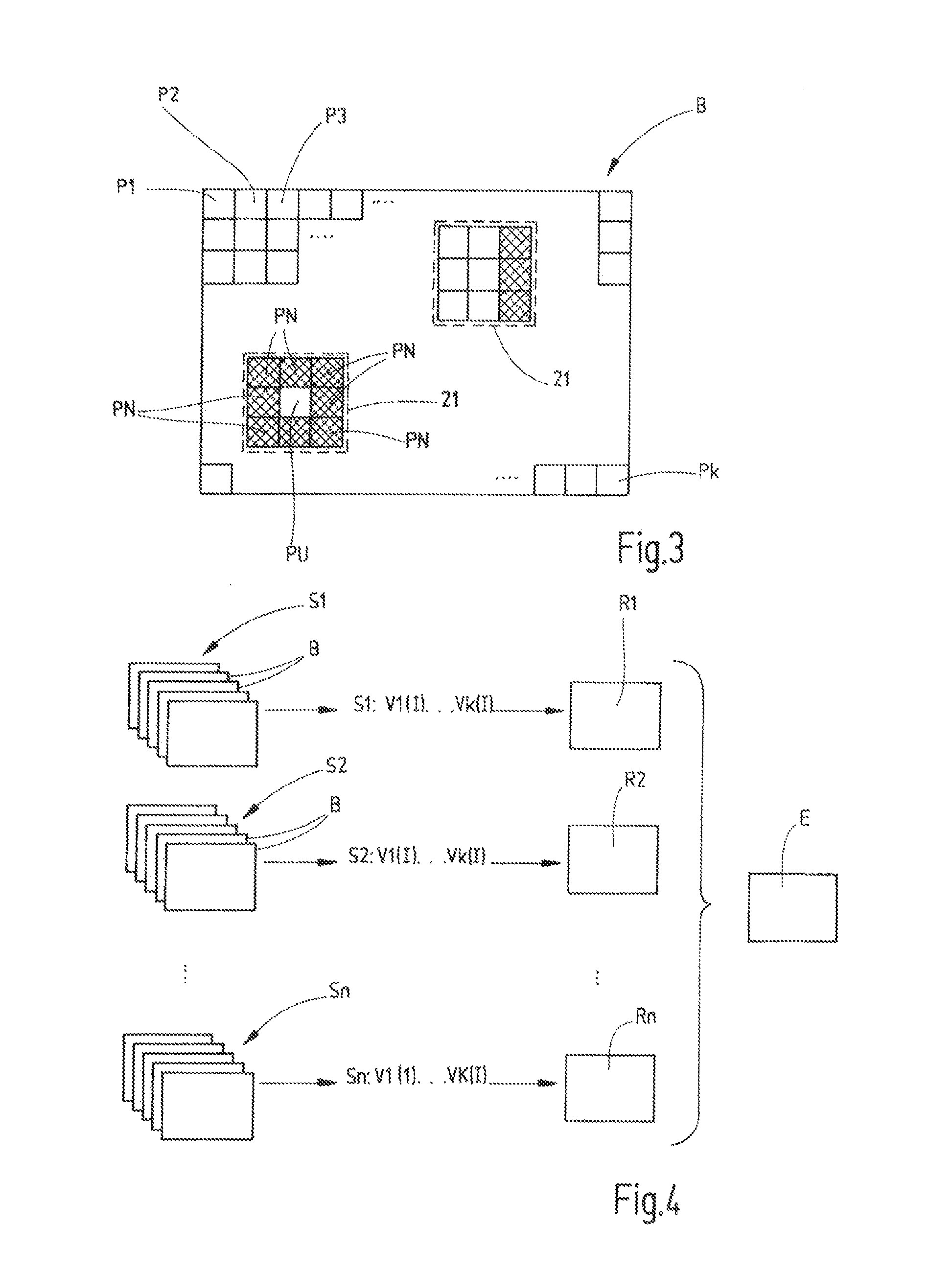Method for optically scanning an edge in or on a surface region
a surface region and optical scanning technology, applied in the field of optically measuring or scanning an edge, can solve the problems of difficult exact detection of the location of the edge in the camera image, and achieve the effects of reducing the necessary measuring duration, reducing the necessary measurement time, and reducing the calculation capacity
- Summary
- Abstract
- Description
- Claims
- Application Information
AI Technical Summary
Benefits of technology
Problems solved by technology
Method used
Image
Examples
Embodiment Construction
[0030]FIGS. 1 and 2 show a device 10 for optically scanning an edge 11 of an object surface region 12 of an object 9. In accordance with the example, two partial regions 18 are contiguous to the edge 11 to be detected in the object surface region 12.
[0031]The device 10 comprises a camera 13, preferably a matrix camera. In addition, the device 10 comprises an illumination arrangement 14 comprising a plurality of light sources 15. Referring to the exemplary embodiment described here, the light sources 15 are distributed around the lens 16 of the camera 13 or its optical axis 17. The distance of the light sources 15 from the optical axis 17 may be the same.
[0032]The camera 13, as well as the illumination arrangement 14, are enabled via a control arrangement 20. The control arrangement 20 can adjust the camera settings such as, for example, location of focus, exposure time, aperture. In addition, the control arrangement 20 enables the illumination arrangement 14. The control arrangement...
PUM
 Login to View More
Login to View More Abstract
Description
Claims
Application Information
 Login to View More
Login to View More - R&D
- Intellectual Property
- Life Sciences
- Materials
- Tech Scout
- Unparalleled Data Quality
- Higher Quality Content
- 60% Fewer Hallucinations
Browse by: Latest US Patents, China's latest patents, Technical Efficacy Thesaurus, Application Domain, Technology Topic, Popular Technical Reports.
© 2025 PatSnap. All rights reserved.Legal|Privacy policy|Modern Slavery Act Transparency Statement|Sitemap|About US| Contact US: help@patsnap.com



